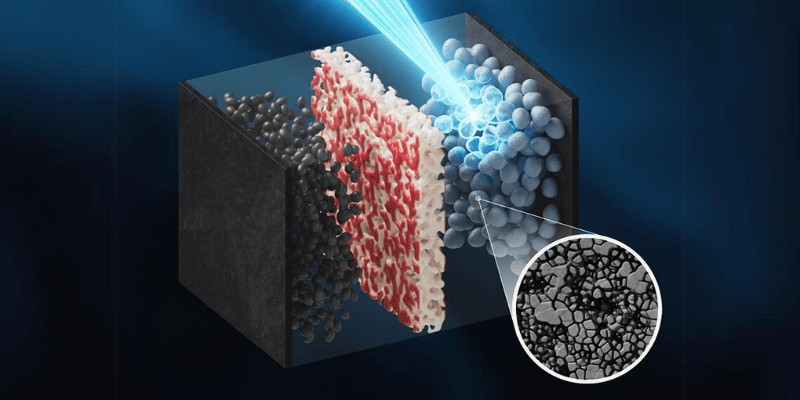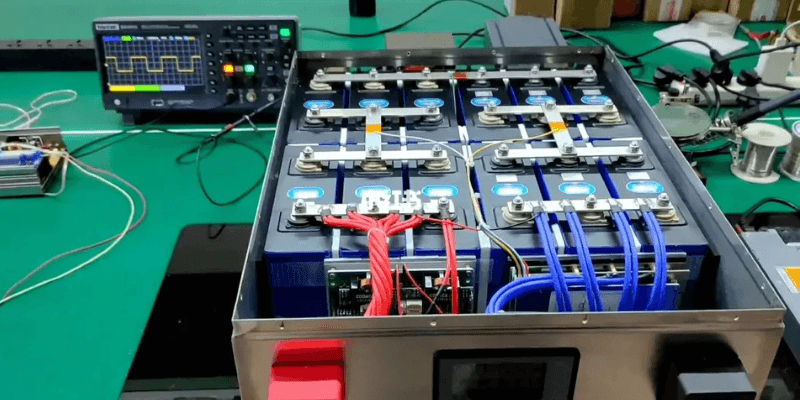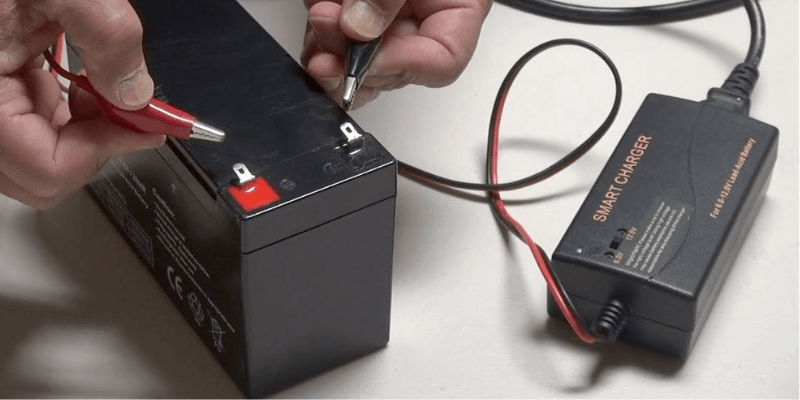بطاريات الحديد الليثيوم، والمعروف عن عالي كثافة الطاقة وطويل دورة الحياة، تحظى بشعبية متزايدة في التطبيقات مثل السيارات الكهربائية وتخزين الطاقة المتجددة. الرعاية المناسبة ضرورية للأداء الأمثل وطول العمر والسلامة. يستكشف هذا الدليل أفضل الممارسات للحفاظ على هذه البطاريات ، بما في ذلك بروتوكولات الشحن وتقنيات التخزين.
ما هي بطارية الحديد الليثيوم؟
بطارية فوسفات الحديد الليثيوم (LIFEPO4 أو LFP) هي نوع من بطارية ليثيوم أيون المعروفة بهيكلها الخفيف وكثافة الطاقة العالية.
تحتوي معظم بطاريات الحديد الليثيوم على خلايا متعددة LifePo4 و نظام إدارة المباني. تتضمن كل خلية كاثود ، وأنود ، وفاصل ، والكهرباء ، وجامعي حاليين. ال الأنود والكاثود تخزين الليثيوم ، في حين أن المنحل بالكهرباء ينقل ليثيوم بشكل إيجابي من خلال الفاصل. تولد حركة الشحن هذه الجهد االكهربى، تمكين التيار الكهربائي من التدفق من الطرف الإيجابي إلى تطبيقك والعودة إلى المحطة السلبية.

كيف تحافظ على بطارية الحديد الليثيوم؟
تحتوي بطاريات الحديد الليثيوم القابلة لإعادة الشحن على محدودة عمر وسوف يفقد في النهاية قدرتهم على تحمل تهمة بشكل دائم. لذلك ، الرعاية المناسبة والصيانة أمران حاسمان لطول العمر.
يتراوح متوسط العمر المتوقع لبطارية الحديد الليثيوم من 5 إلى 15 عامًا ، اعتمادًا على الاستخدام. يمكن أن توفر بطارية LifePo4 ما يصل إلى 2000 دورة شحن كاملة أو 6000 دورة جزئية. تتحرك دورة كاملة من مشحونة بالكامل إلى تفريغها بالكامل ، ثم العودة إلى الشحن بالكامل. إن ترك البطاريات غير المستخدمة لفترات طويلة يمكن أن تقصر عمرها ويؤدي إلى الفشل.
نوصي بإجراء دورة صيانة كاملة واحدة على الأقل (شحن إلى 100 ٪ من SOC ، وتصريف إلى 100 ٪ DOD ، ثم شحن إلى 50 ٪ SOC) كل 6-12 شهرًا لجميع بطاريات الليثيوم غير المستخدمة. تحقق من البطاريات المخزنة للحصول على OCV (جهد الدائرة المفتوحة) باستخدام الجدول أدناه للحصول على الحد الأدنى من جهد التخزين الموصى به. إذا كان الجهد منخفضًا أثناء عمليات فحص الصيانة ، توصي Holo Battery بإعادة شحن البطارية حسب الحاجة.
| نطاق الجهد (V) | نوع منتج فوسفات الحديد الليثيوم |
| 3.3-3.4 | الخلية الفردية |
| 13.2-13.6 | حزمة البطارية 12V |
| 26.4-27.2 | حزمة بطارية 24V |
| 39.6-40.8 | حزمة بطارية 36V |
| 52.8-54.4 | 48 فولت حزمة البطارية |
للحصول على أفضل صيانة للخلايا أو البطاريات ، افحصها كل ستة أشهر للحصول على علامات على التآكل الطرفي وقضايا سلامة الحالة. تجنب استخدام البطاريات التالفة لمنع مخاطر السلامة.
بطاريات LIFEPO4 لها أسعار بطيئة للتفريغ الذاتي أثناء التخزين. ومع ذلك ، إذا كان لديهم وظائف Bluetooth أو WiFi ، فقد يزداد معدل التفريغ بسبب سحب الطاقة للوحدة. يعد مراقبة مستوى شحن البطارية بانتظام أمرًا حيويًا للحفاظ على صحتها والحفاظ على إنتاج الطاقة.
لقياس صحة البطارية ، تتبع وقت تشغيل التطبيق كمقياس بسيط. إنشاء خط أساس عن طريق تسجيل وقت التشغيل الأولي لبطارية الليثيوم الجديدة الخاصة بك للمقارنة مع تقدمها. قد يختلف هذا المعيار وفقًا لتطبيق البطارية وتكوينها.

كيف يمكنني شحن بطارية الحديد الليثيوم؟
يضمن شاحن البطارية الخاص بالليثيوم دورة شحن كاملة. تستخدم أجهزة شحن LifePo4 شحن ذكي من 3 خطوات لإحياء البطاريات التي تم تفريغها بعمق.
بالإضافة إلى ذلك ، تزيد تقنية الشحن المحسّنة من الأداء والعمر عن طريق استخدام قدرات البطارية بشكل فعال.
تعرف على المزيد في المقالة "كيفية شحن بطاريات الفوسفات الليثيوم lron (LIFEPO4)".
ما هو معدل الشحن الذي سيمدد عمر بطارية الحديد الليثيوم؟
يتم اختيار أجهزة الشحن بناءً على سعة البطارية. يمكن لبطاريات الليثيوم شحن بمعدلات تصل إلى 1C (طاقتها الكاملة) ، في حين يجب أن يتم شحن بطاريات حمض الرصاص أدناه C/3. على سبيل المثال ، تشحن بطارية الليثيوم 9AH في 9 أمبير ، في حين يجب أن يتم شحن بطارية 9AH الحمضية في حوالي 3 أمبير.
لتمديد عمر بطارية LIFEPO4 الخاصة بك وتقليل وقت التوقف ، يوصى بشحنها في نطاق C/4 إلى C/2. بالنسبة لبطارية 10AH ، هذا يعني الشحن من 2.5A إلى 5A ، مع 2.5A كونه مثاليًا. إذا كان يجب عليك الاختيار بين شاحن 2A و 5A ، فاختر شاحن 2A لزيادة عمر البطارية إلى الحد الأقصى ، على الرغم من وقت الشحن الأطول حوالي 5 ساعات.
عادةً ما يتم تعيين تيار قطع الشحن بين 2.5-5 ٪ من سعة البطارية ، مما يؤدي إلى انقطاع نطاق تيار قطع يتراوح بين 0.25-0.50A لأمثلة 10AH. معظم أجهزة الشحن تتعامل تلقائيًا من هذا القطع دون تعديلات يدوية.
توفر شواحن Universal المرونة لاختيار أنواع كيمياء مختلفة ، وضمان أفضل نطاقات الجهد وآليات القطع المناسبة عند الوصول إلى الشحن الكامل. على سبيل المثال ، يمكن لهذه الشواحن أن تغلق تلقائيًا لبطاريات الليثيوم أو التبديل إلى وضع الشحن العائم لبطاريات حمض الرصاص المختومة (SLA) ، مما يعزز سلامة وكفاءة عملية الشحن.

تخزين طويل الأمد
عند تخزين البطاريات على المدى الطويل ، فكر في المتطلبات المختلفة لبطاريات SLA و Lithium.
قم بتخزين بطاريات SLA بالقرب من حالة شحن بنسبة 100 ٪ (SOC) لمنع الكبريتات ، مما يقلل من السعة بسبب تراكم بلورات الكبريتات. يجب تخزين بطاريات الليثيوم حوالي 50 ٪ من SOC للحفاظ على الاستقرار في المحطة الإيجابية وتجنب فقدان السعة الدائم. للحصول على إرشادات محددة حول تخزين بطارية الليثيوم ، راجع إلى دليل مخصص.
تؤثر معدلات تفريغ الذات أيضًا على التخزين: تتمتع بطاريات SLA بمعدل تفريغ ذاتي مرتفع ويجب أن تبقى على تعويم أو شحنة متدلية بالقرب من 100 ٪ من SOC. على النقيض من ذلك ، فإن بطاريات الليثيوم لديها معدل تفريغ أقل وقد تتطلب الحد الأدنى من شحن الصيانة إذا لم تكن هناك سحب طفيلي مثل وحدات البلوتوث.
كيف تحافظ على بطارية ليثيوم أيون من التآكل؟
يحتوي Holo Battery على ميزات متكاملة في محطات البطارية لمكافحة التآكل. ومع ذلك ، لا تزال البطاريات تتآكل بمرور الوقت على الرغم من الرعاية.
يمكنك تقليل التآكل باتباع هذه الخطوات:
- قم بتخزين بطاريتك في بيئة باردة وجافة لتقليل التآكل وتوسيع عمرها.
- قم بإغلاق المحطات المحطات مع حماية على الرش من متاجر الأجزاء التلقائية للوقاية المثلى.
- تفقد بانتظام وتنظيف أطراف بطارية الليثيوم بقطعة قماش جافة ناعمة إذا كانت تبدو متسخة لمنع تراكمها الصعبة في وقت لاحق.

